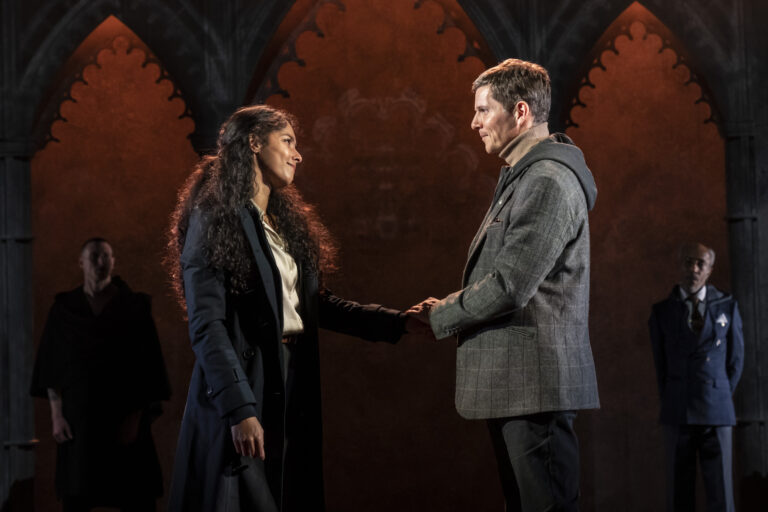Theatre Royal, Brighton – until 19th March 2022
Reviewed by Sue Bradley and Francois Craig
3***
With a best -selling book and film of the same name, it would be hard not to have heard of the Da Vinci Code. The film, book and now this stage adaption combine a fast-moving conspiracy thriller with just enough detail to make you wonder if, just perhaps, there might be some truth to the conspiracy … you may also be familiar with the territory of the plot if you have read The Holy Blood and the Holy Grail by Michael Baigent, Richard Leigh and Henry Lincoln, or books by Umberto Eco such as The Name of the Rose or Foucault’s Pendulum.
With the action starting in Paris (a series of announcements and projections cause us to believe that we are in the Louvre) and then moving to London, our hero and his companion must decrypt a set of clues to a monumental religious secret hidden within various artworks and public buildings. Aided by – or is it manipulated by – an eccentric Grail scholar, the pair race to uncover the secret whilst being chased by a shadowy organisation, determined, at all costs, to prevent the secret being uncovered and made public.
This is a story reliant on visual clues, so it was intriguing to see how a theatre production would bring the story alive on the stage.
Nigel Harman leaves his Eastenders’ “Dennis Rickman” persona behind as the sometimes baffled art historian Robert Langdon. Hannah Rose Caton, as cryptologist Sophie Neveu, is spirited in her UK stage debut, becoming his partner in adventure, rather than simply a sidekick. Danny John Jules gives no hint of the Red Dwarf “Cat” that defined his earlier career, playing Teabing, the enigmatic expert.
The three principals lead the action at a breathless pace, ably supported by the rest of the cast, who take on multiple roles to bring us a larger number of diverse characters and a ‘chorus’ choreographed by movement director Tom Jackson Greaves.
Perhaps the real star of the show is the production itself. A deceptively simple set provides an effective backdrop to clever projections. These deliver the clues that drive the plot and you won’t need your opera glasses to read them, and a well-written musical score contributes to create an almost film-like experience.
The story’s twists and turns are brought to a satisfying conclusion although the secret-within-a-secret ending felt a little rushed. Nevertheless, this reviewer found it an entertaining diversion and if you are a fan of the book or the film, you will not be disappointed.

